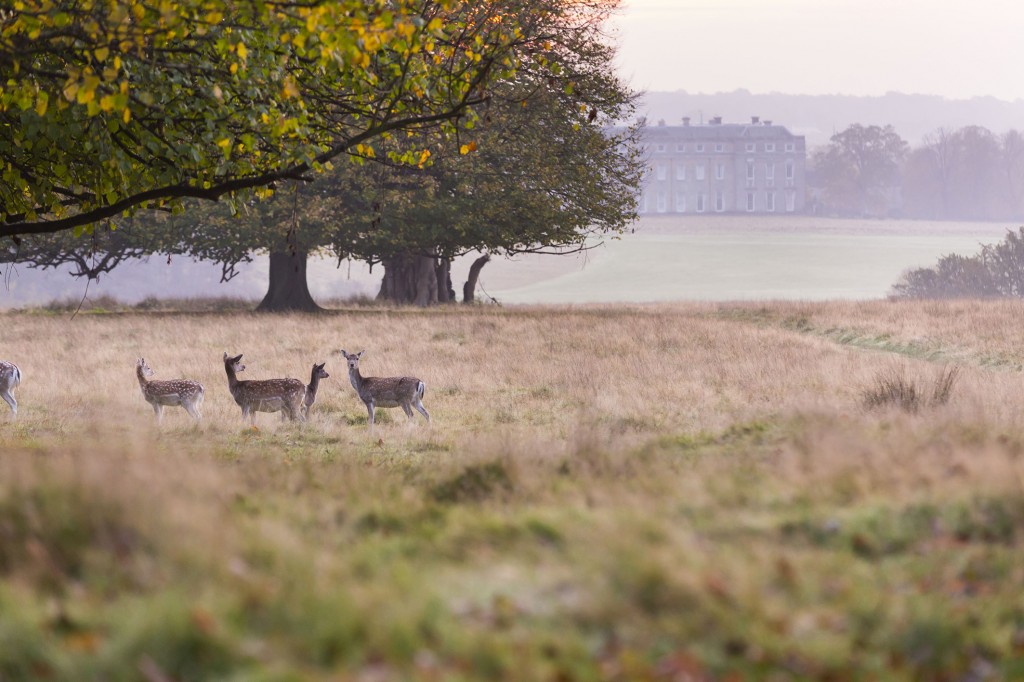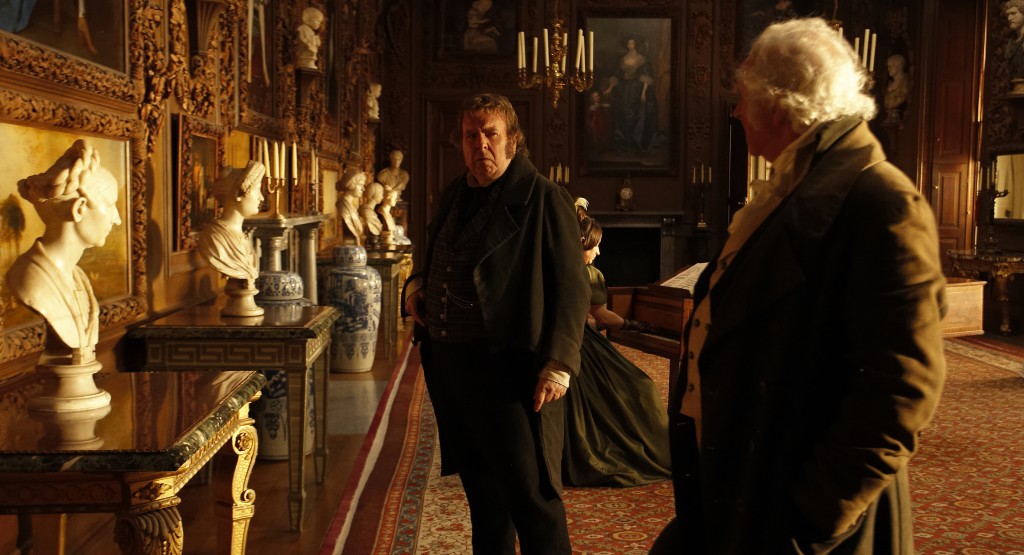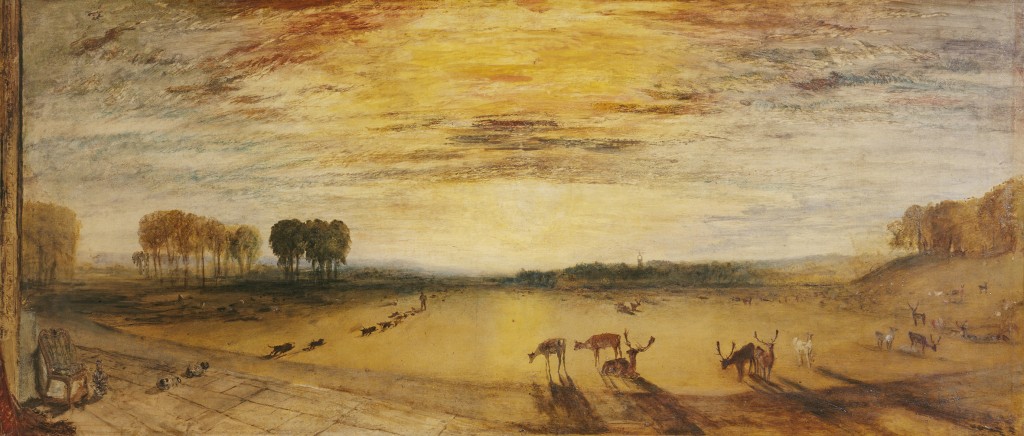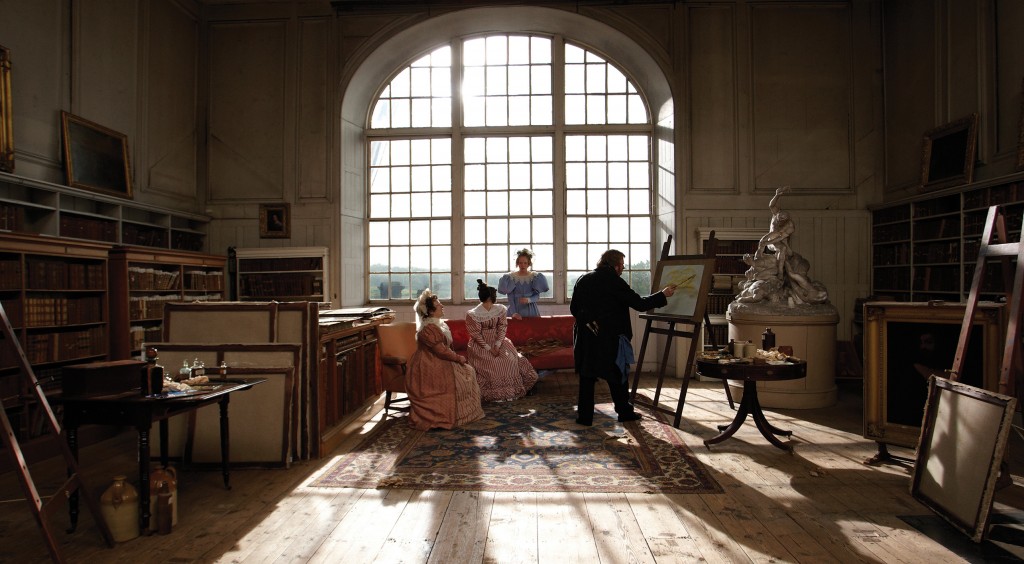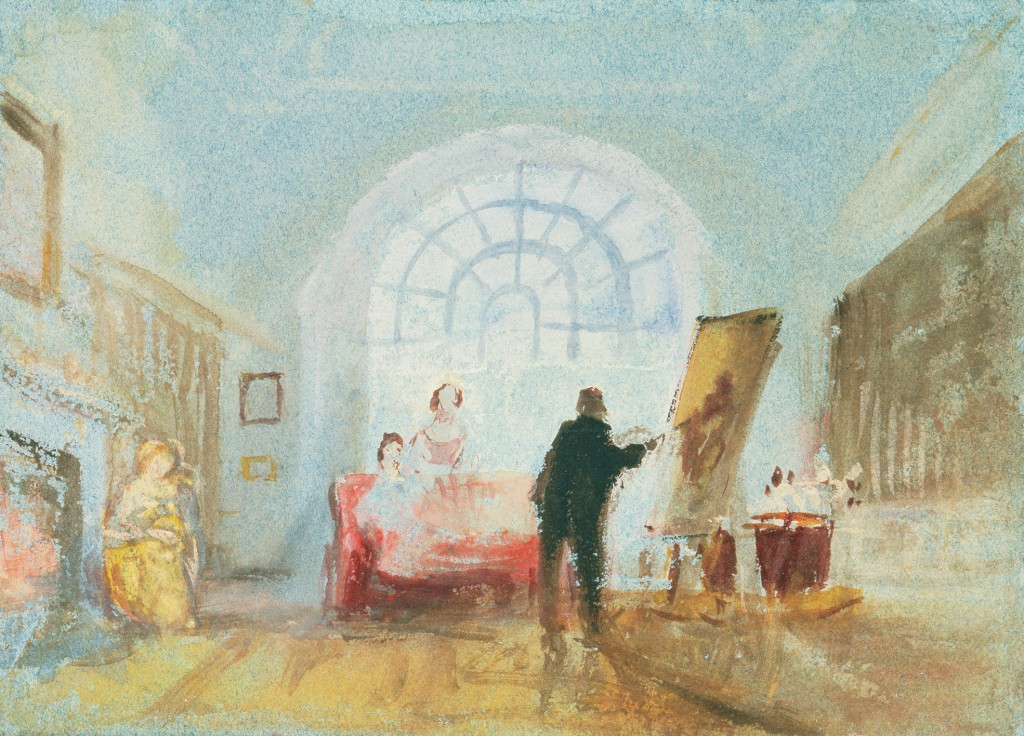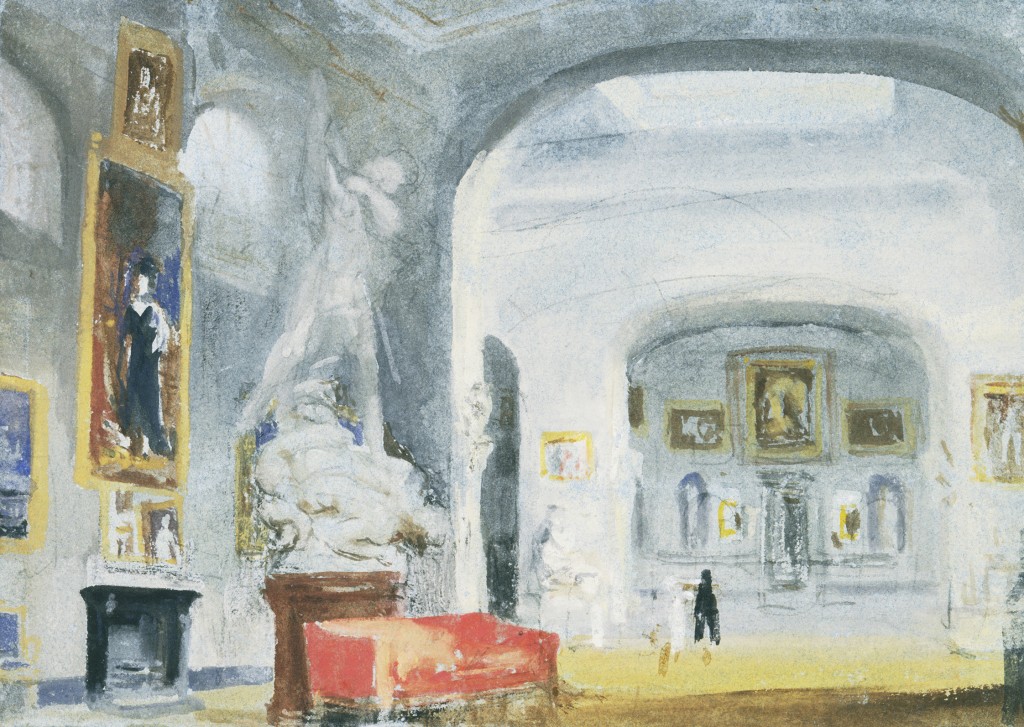
How modern the 21st century gallery interior seems to us with its light, white interiors – but is it really modern?
This week we are at Petworth House, in the company of the National Trust’s inspirational Exhibitions Manager, Andrew Loukes. The Petworth House team are preparing for their spring opening on Saturday 19th March 2016. All around us the house’s treasures are emerging from beneath their winter covers.
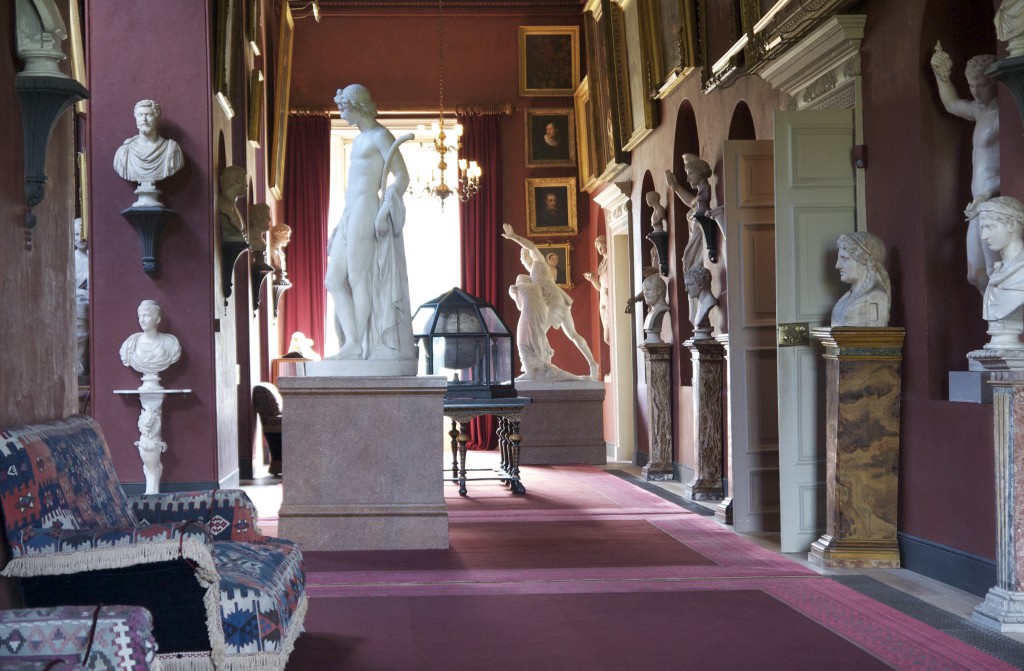
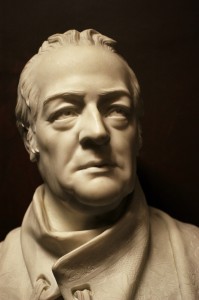
As we enter the North Gallery the deep red of the walls sets off the white of the sculptures. It is a remarkable space. The blinds are opened and the light floods in. It reminds me of a watercolour of the North Gallery by the artist J.M.W. Turner (1775-1851). The watercolour depicts the gallery luminous and white. John Flaxman’s (1755-1826) famous sculpture ‘St Michael subduing Satan’ is to the fore. The sketch is one of a number produced by Turner which he painted for his own pleasure, they illustrate life behind the scenes at Petworth House. Andrew Loukes explains “At the time of the 3rd Earl these galleries were painted white.” I remark that this must have been the first white cube gallery. Andrew agrees and adds “This is arguably the first purpose built art gallery in Britain.” He reminds me that the Carved Room at Petworth House, sometimes called the Long Dining Room, was created by the 3rd Earl from two rooms. It houses the remarkable Grinling Gibbons carvings. The room would have appeared very much as it does today although the panelling was papered and painted white. Andrew says “The effects of this white colour scheme can be seen in the palette of Turner’s paintings produced specifically for that room.” Some rooms were also painted a bright red.
The North Gallery was altered and expanded by both the 2nd and 3rd Earl’s of Egremont. The influence of George Wyndham O’Brien (1751-1837), 3rd Earl of Egremont, and his forebears is immediately apparent. The best contemporary art of the early 19th century sits alongside sculptures from classical antiquity. Andrew Loukes explains that this is no accident “This is a very personal collection reflecting father and son. The classical sculpture was predominately collected by the 2nd Earl. Under the 3rd Earl the modern was brought alongside the ancient. The house and collection influenced many of the artists of the time. It is not possible to overemphasize how important this place was, in the early 19th century, to British art –it was an unofficial academy.” The 3rd Earl was very discerning so there are no examples of work by artists like John Constable or Edwin Landseer in the collection, even though they stayed at Petworth.
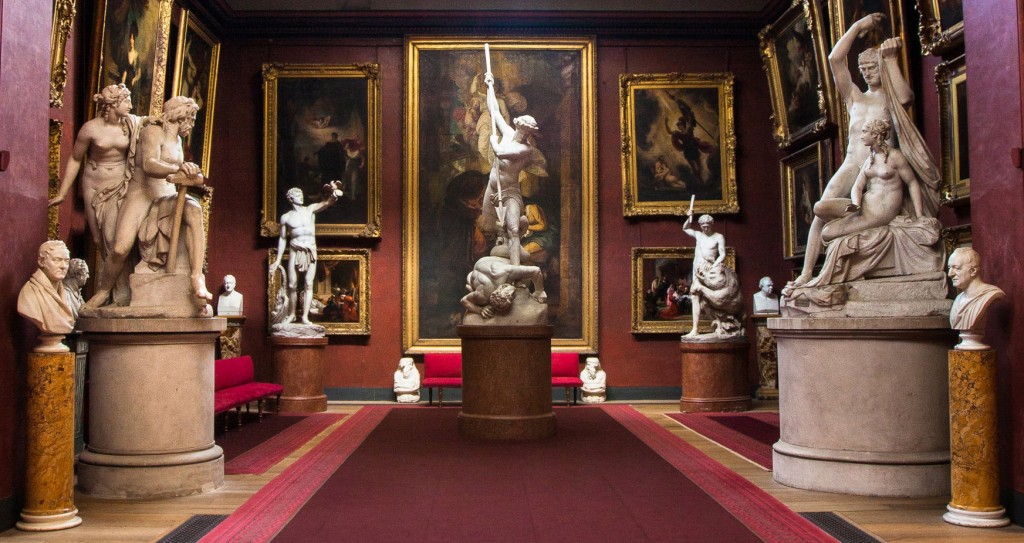
John Flaxman’s ‘St Michael subduing Satan’ is still displayed in the North Gallery. Flaxman based the composition of this piece on Raphael’s painting of St Michael which now hangs in the Louvre. The sculpture tells the story of the eventual triumph of good over evil from the book of Revelations in the Bible. A youthful St Michael prepares to smite Satan as he raises his spear. It is a heroic and patriotic piece produced by Flaxman at the height of his powers.
It was John Ruskin who commented that the white walls made the sculptures look dirty and by the 1850s the North Gallery’s walls had been painted red. Petworth House is one of the nation’s great treasure houses. The house reopens on Saturday 19th March 2016. Whether you are visiting for the first time or returning to an old friend you cannot fail to be inspired by the art and history of the place. For more information go to www.nationaltrust.org.uk/petworth-house.
By Rupert Toovey, a senior director of Toovey’s, the leading fine art auction house in West Sussex, based on the A24 at Washington. Originally published in the West Sussex Gazette.
